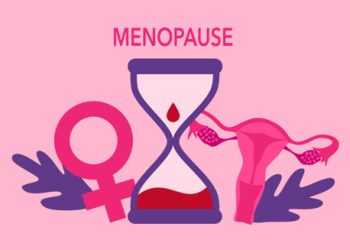The outlook for high blood pressure varies significantly depending on when the condition is diagnosed, how consistently it is managed, and whether complications have already developed.
For people diagnosed early, managing high blood pressure becomes more manageable. Lifestyle changes and sticking to medication can lead to a good outcome. Many individuals with high blood pressure live full, healthy lives with little disruption. But when it stays uncontrolled, serious risks increase. These include heart attacks, strokes, kidney failure, and memory loss.
High blood pressure is often called a “silent killer.” It causes damage over time, often without symptoms. Fortunately, more people are getting diagnosed earlier due to better awareness. This improves long-term outcomes. Still, in many parts of the world, especially where healthcare is limited, the condition remains a major health problem.
Long-Term Prognosis with Controlled Blood Pressure
The outlook for high blood pressure is much better when people take control early. Studies show that keeping blood pressure below 130/80 mmHg greatly reduces health risks. Even small drops in pressure can improve survival.
Those who monitor and manage their blood pressure avoid serious complications. Regular check-ups, a healthy diet, exercise, and taking medicine as directed all help.
Understanding the condition also plays a big role. People who know what high blood pressure does are more likely to follow their treatment plans. This lowers the chances of future problems.
Poor Outlook When Left Untreated
On the other hand, the outlook for high blood pressure is worse when left untreated. Over time, constant high pressure strains the arteries and harms major organs. Doctors call this “target organ damage,” meaning harm to the heart, brain, kidneys, and eyes.
Skipping treatment or stopping medication often leads to serious emergencies. A sudden rise in blood pressure, called a hypertensive crisis, may need emergency care or can even cause death. Long-term problems also include kidney damage, vision loss, and memory issues.
In many of these cases, damage cannot be undone. Treatment then shifts from stopping the disease to managing long-term complications. This may shorten life by 10 to 20 years, depending on how badly the organs are affected.
The Outlook for High Blood Pressure and Life Expectancy
The outlook for high blood pressure, in terms of life expectancy, depends on how quickly it is managed. Research shows people with controlled blood pressure live 5 to 10 years longer than those with uncontrolled pressure.
Even older adults benefit. Starting treatment later in life still lowers the risk of stroke, heart attacks, and memory loss.
Quality of Life and High Blood Pressure
The outlook for high blood pressure is not only about how long someone lives. It’s also about how well they live. With proper care, people can stay active, independent, and enjoy daily life. Treatment helps reduce tiredness, keeps the mind sharp, and lowers the risk of serious problems.
But in advanced cases, life quality may drop. Conditions like kidney disease or heart failure make daily tasks harder. Mental health may also suffer. In these situations, help from different types of doctors is often needed—such as heart, kidney, and mental health specialists.
Living with a long-term condition can also affect emotions. Worrying about heart health or dealing with side effects may lead to anxiety. Support groups, counselling, and good medical advice can help ease this burden.
The Role of Technology in the Outlook for High Blood Pressure
New tools have greatly improved the outlook for high blood pressure. Home blood pressure monitors, health apps, and video doctor visits make it easier to track and manage the condition. These tools allow fast changes in care when needed.
New medicines also help. Many are long-lasting and have fewer side effects, so people are more likely to take them. Some pills now combine two or more drugs, making treatment simpler.
In the future, genetic testing and smart computer systems may make care even better. These could help spot the disease early and tailor treatment to each person.
Challenges Around the World
The outlook for high blood pressure is not the same everywhere. In some areas, especially in sub-Saharan Africa and parts of Asia, many people don’t know they have it. Access to care, medicine, and health education is limited.
Even in wealthy countries, certain groups—like older adults and low-income communities—face worse outcomes. They may not have regular access to doctors or may not trust the system.
To change this, many places have started public health programmes. These include blood pressure screenings, reducing salt in foods, and offering cheap or free medicine. But long-lasting change will require more money, education, and government support.
A Positive Outlook for High Blood Pressure
The outlook for high blood pressure has improved over the past 20 years. Thanks to better tests, stronger medicine, and more awareness, more people are living longer and better lives. Those who follow their care plan, make healthy changes, and go to regular check-ups often do very well.
But the condition still causes problems around the world. To keep making progress, we need better education, new tools, and strong primary healthcare systems.
In the end, high blood pressure does not have to control your life. With support, a plan, and the right tools, the outlook for high blood pressure can be very positive.


